Enjoy a country garden created for a new home in Berkshire
This stunning design by Bowles & Wyer showcases the quintessential English country garden with contemporary flourishes

This classic country garden has many different aspects – from expansive lawns and a traditional arbour walkway to modern planting. With some areas taking on a more traditional style with lavender bedding and wooden structures, the levelled patio area is a stark contrast. With its clean lines, architectural level structure and modern finishing – it provides an outlook of greenery from every facing window in the house. Another key feature of the landscape is the meadow land just beyond the stile, brimming with wild flowers and plants.
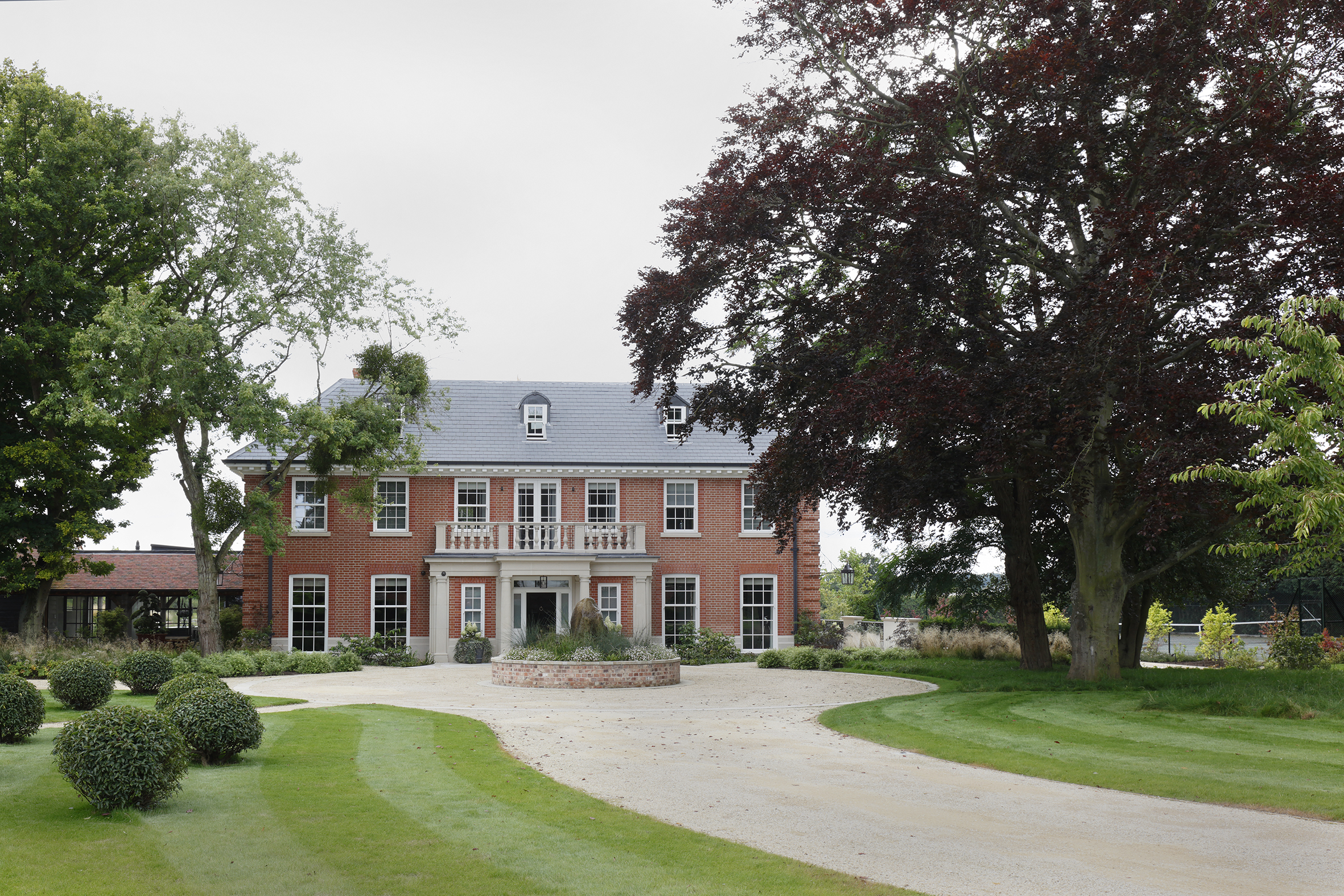
The reconfigured driveway sweeping to the front of the house is bordered with sculptural lawns, buxus balls and majestic Copper Beech, Ash and Maple trees to give the approach a parkland feel.
See: How to design a restorative garden to lift your spirits
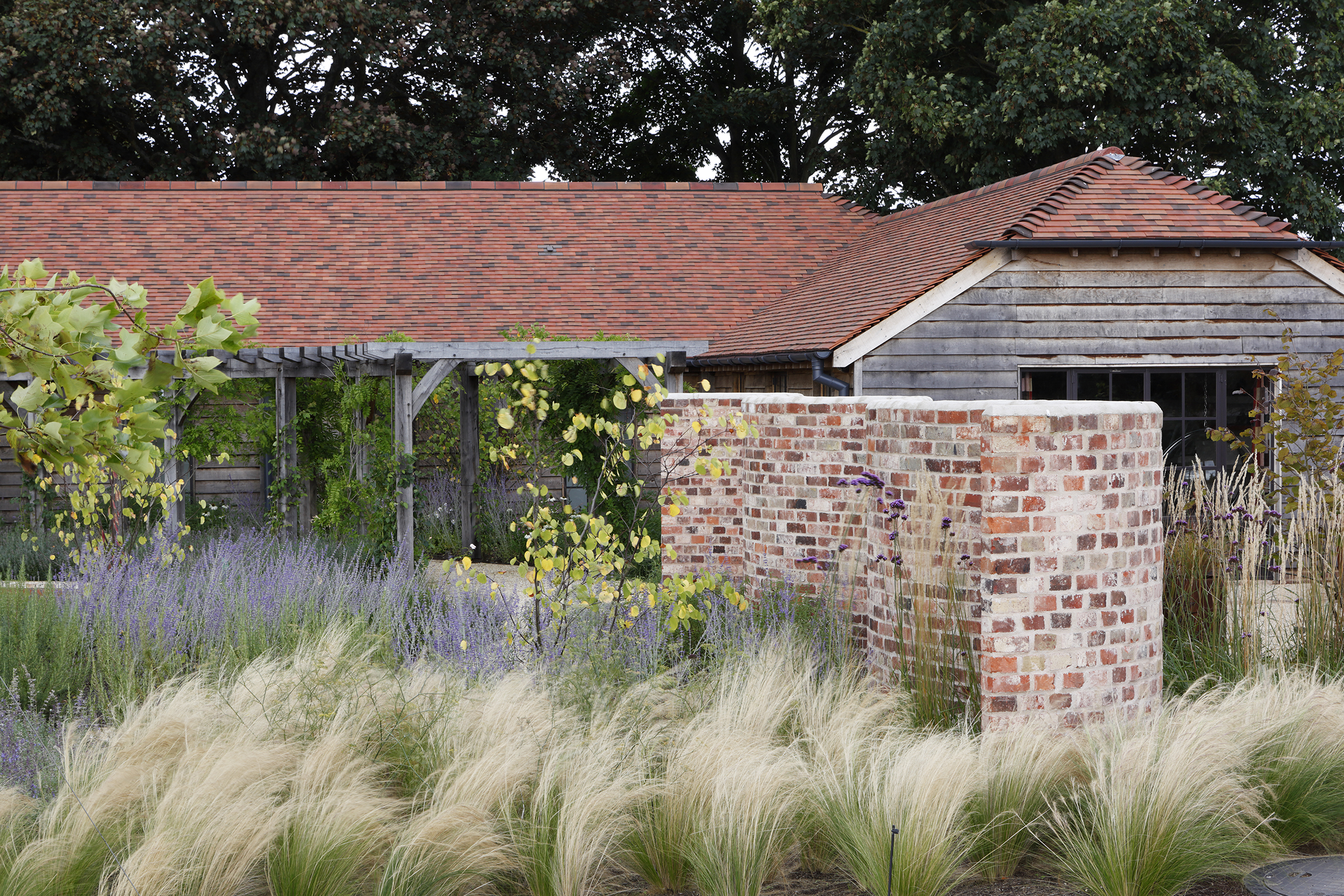
Drifts of perennials and grasses provide a naturalistic look as the garden blends with the wildflower meadow beyond. The palette of ornamental grasses includes Calamgrostis, Panicum, Molinia and Seslaria.
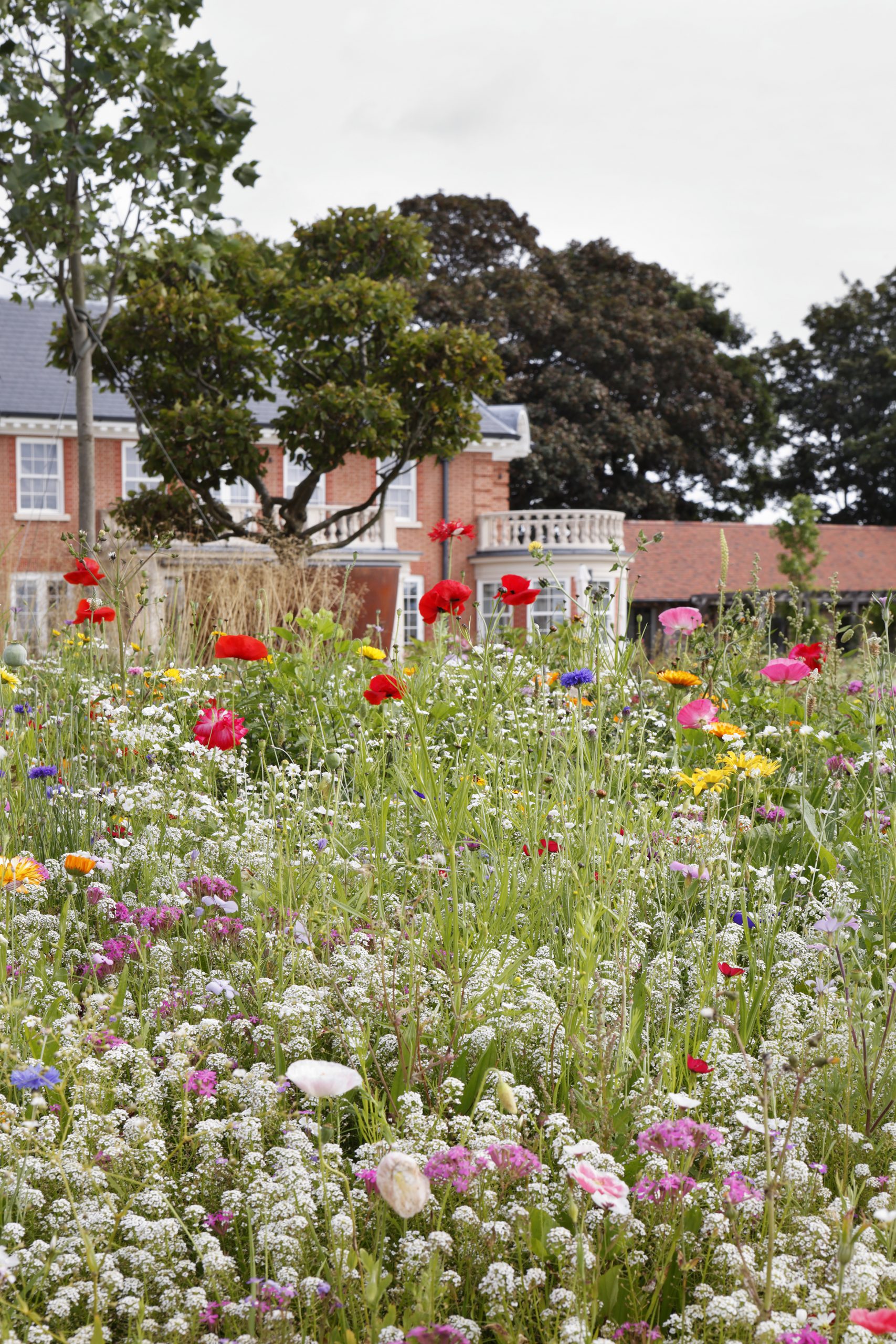
The meadow land just beyond the stile is brimming with wild flowers and plants. Which are easy to maintain and are also a magnet for wildlife.
See: Five-minute gardening tips from the National Trust
Why go wild?
John Wyer of Bowles & Wyer tells us 'Wildflower meadows are increasingly popular as people become more aware of sustainability and environmental issues. They can be a fantastic addition to a large country garden or estate not least because of their beauty, but also because they are great for insects and birdlife. However, they are an element that needs to be treated with caution. Natural wildflower meadows are difficult to recreate and need a very nutrient poor soil to be successful. They also need to have any competitive grasses (from existing lawn, pasture or paddock) completely removed. If this is not done, these grasses (particularly rye) will out-compete most wildflowers within a season or two. One practical solution is to remove the topsoil and use it elsewhere on the site, which is what we did here. That allowed us to work with a sandy nutrient-poor subsoil that was perfect. There are different types of seed mixes available. Here we went for a mix that was more geared towards the decorative end of the spectrum, with a lot of colour. There are also mixes with a blend of more traditional wild meadow flowers. If it is not possible to achieve a suitable soil, try killing off existing grasses and then sowing a mix with less competitive grasses and the more persistent wildflowers (such as Ox-eye daisies). Moles Seeds produce a mix like this.'
Sign up to the Homes & Gardens newsletter
Design expertise in your inbox – from inspiring decorating ideas and beautiful celebrity homes to practical gardening advice and shopping round-ups.
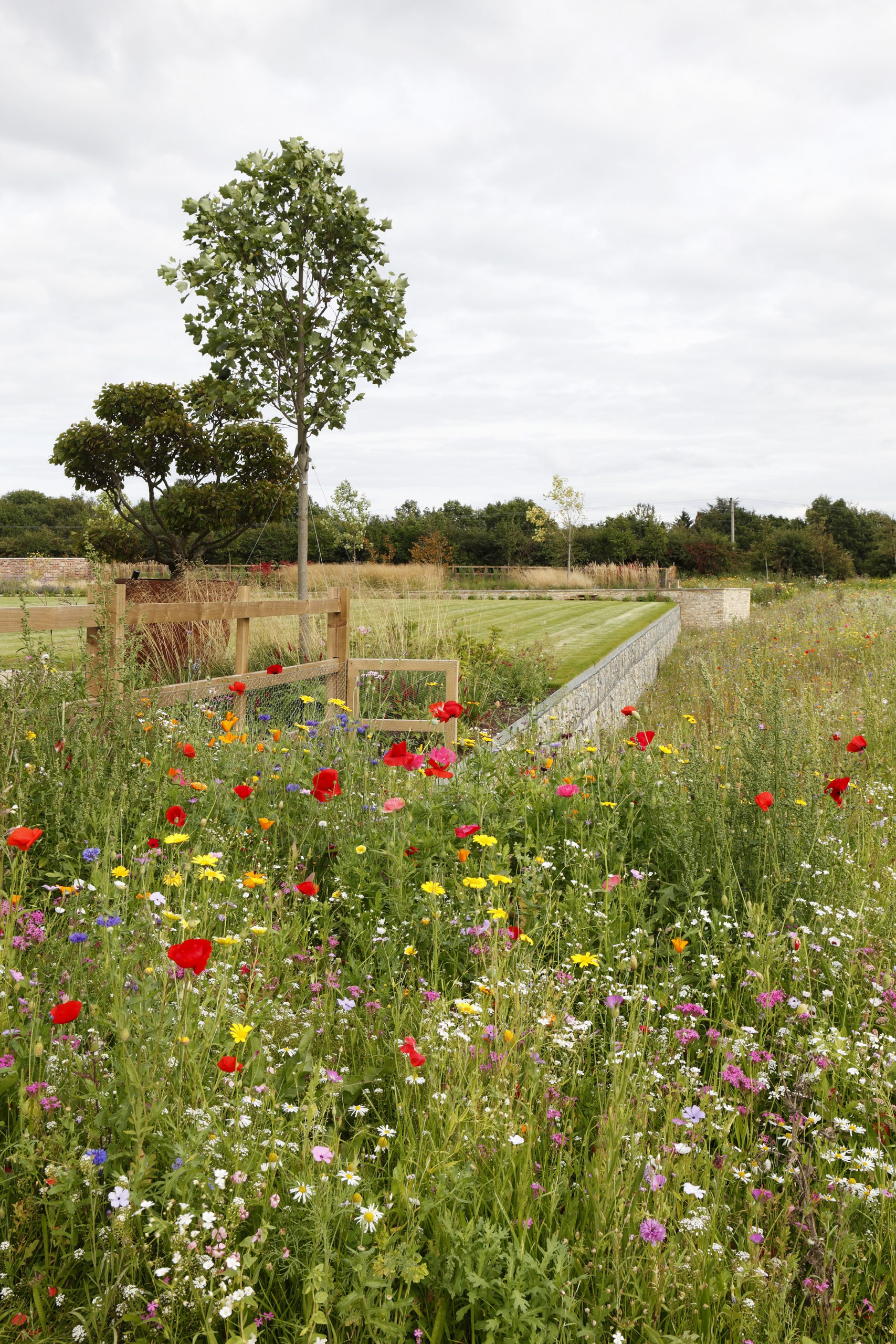
A gabion ha-ha separates the main garden and the wildflower meadow from the agricultural field. Two curved arms of the main path are flanked on either side by Liriodendron tulipifera (Tulip tree).
Traditional touches
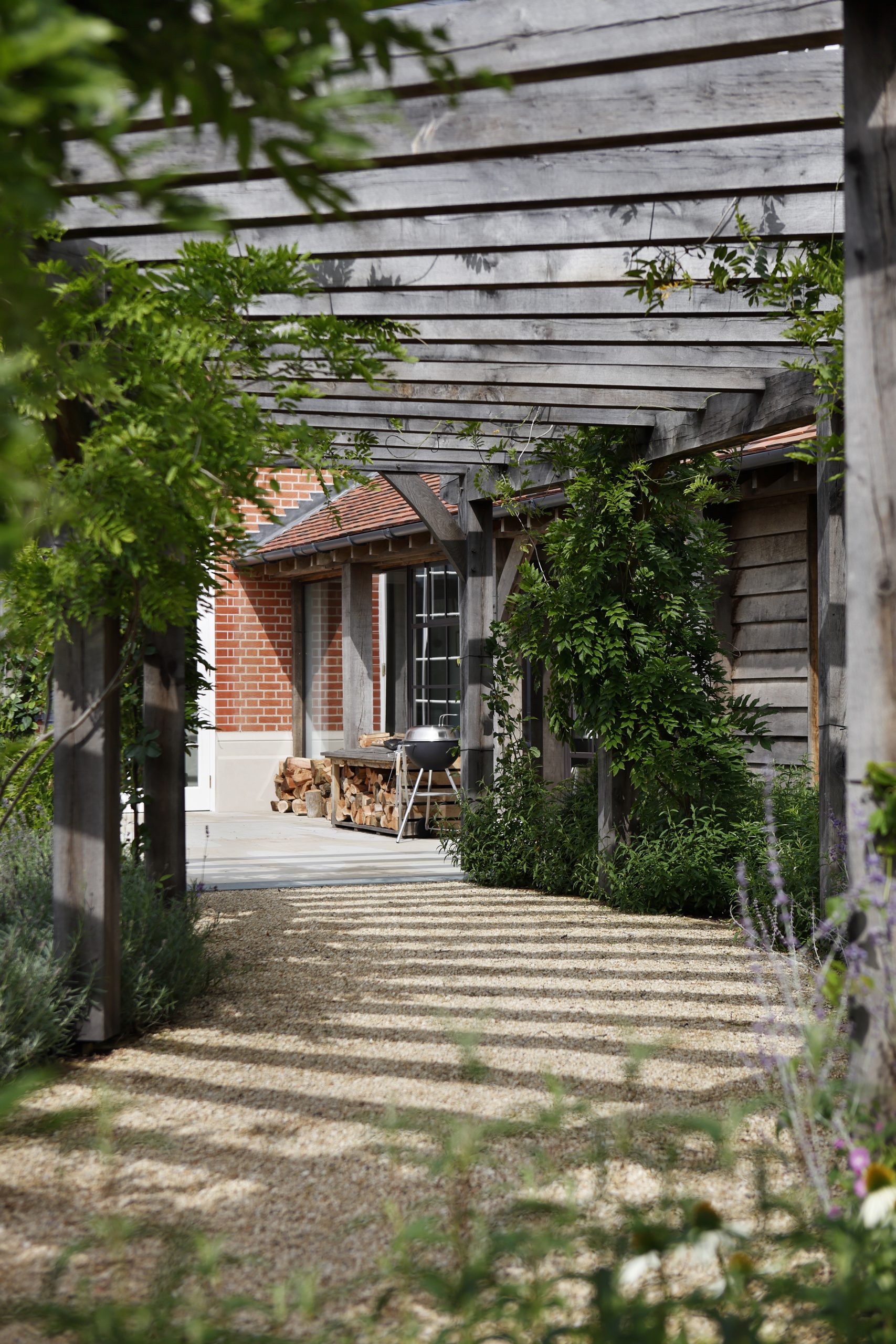
A traditional oak arbour walkway joins the sunken fire pit and annex with the main curved path adding an architectural feel to garden.
Contemporary planting
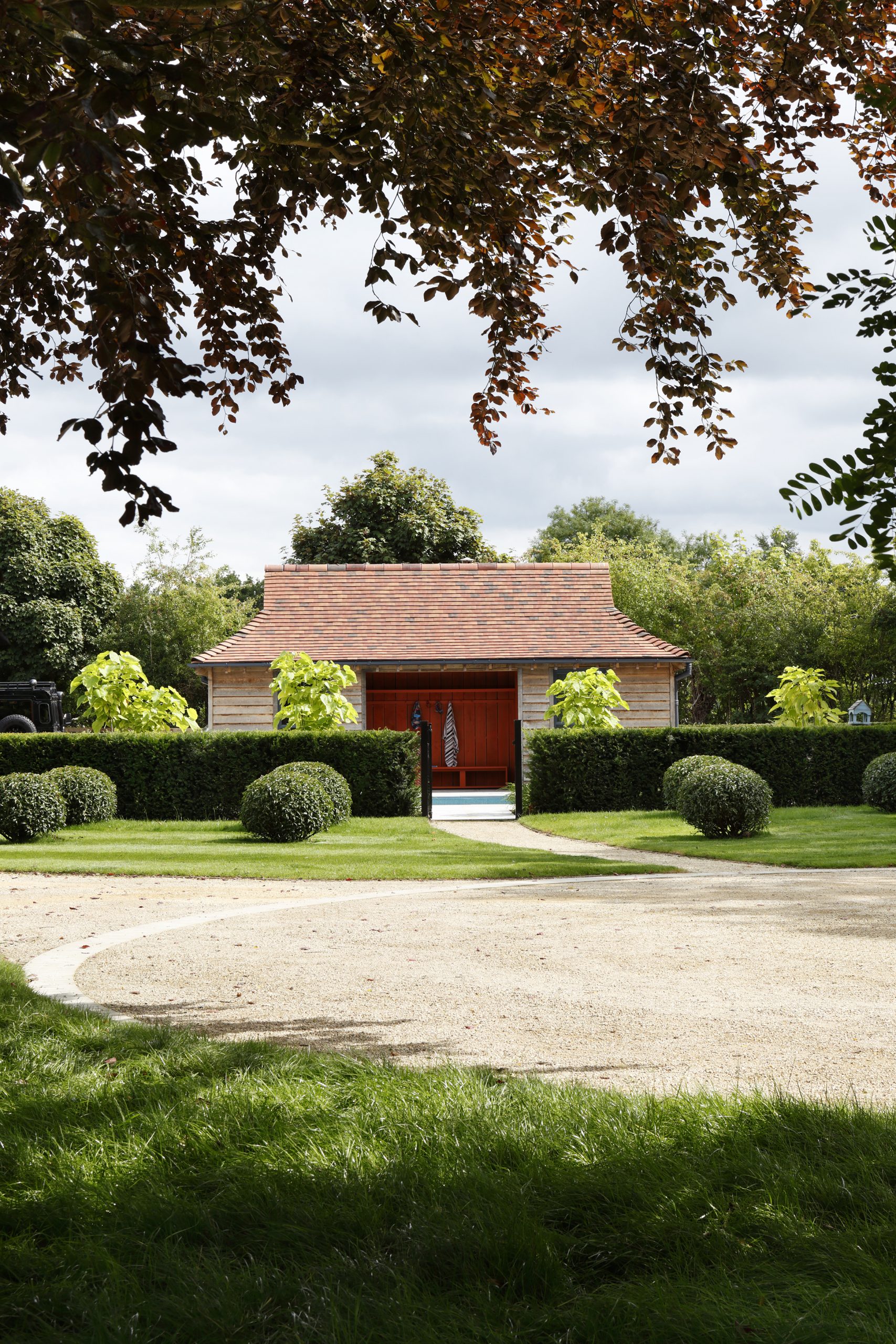
Topiary and hedging adds a note of formality to the front garden and shields the swimming pool garden and children’s play area beyond.
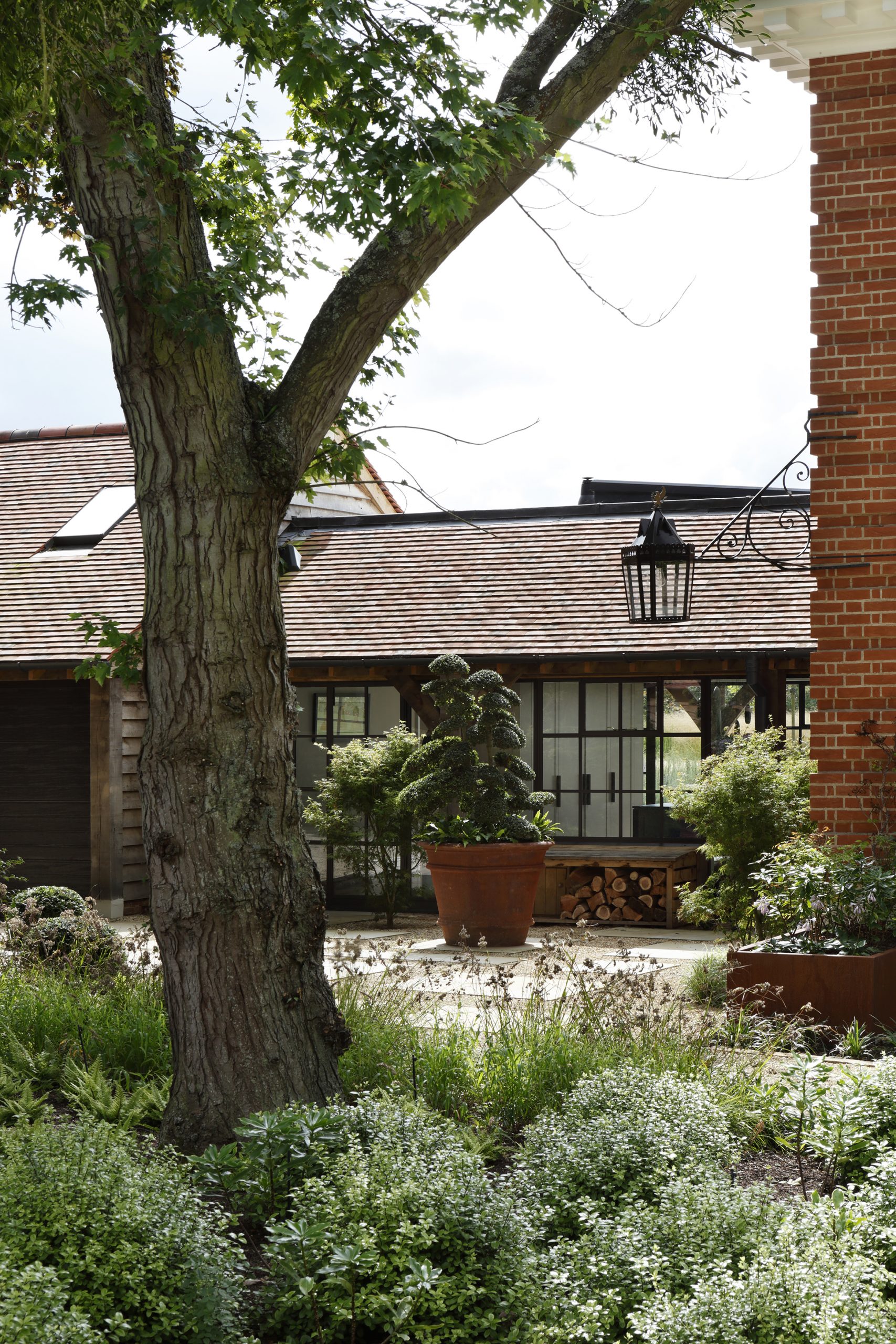
Modern planting enhances the contemporary terrace. Planting palette includes: Pittosporum ‘Golf Ball’ (in the foreground) with Daphne ‘Sweet Amethyst’ and Luzula nivea (in the middle ground).
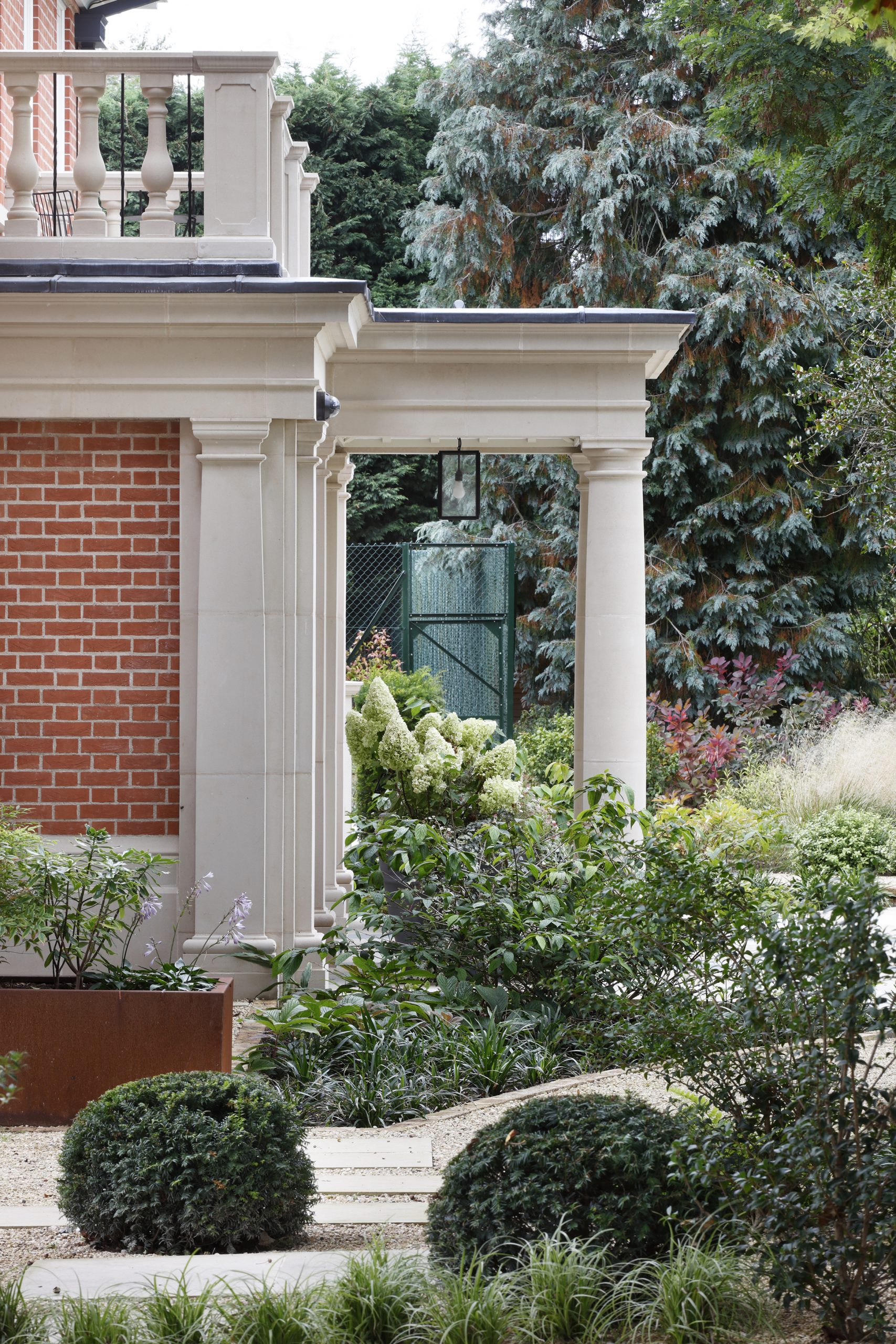
A stylish sunken garden with tiers of clipped topiary and multi-stem trees leads down to a contemporary patio area directly outside the house and opening off the indoor pool and entertainment area on the lower ground floor.
How to choose the perfect place for your firepit
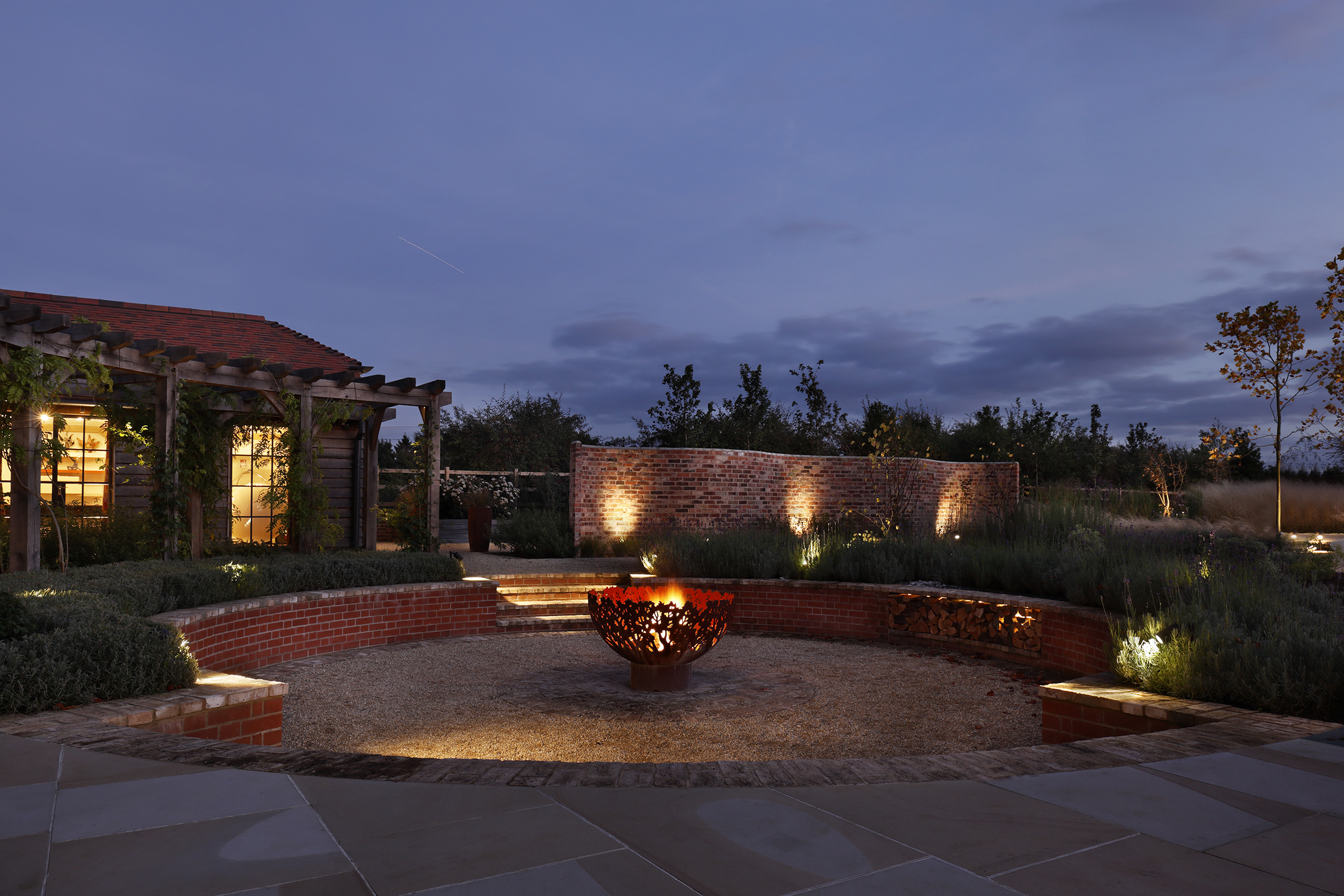
A sunken fire pit close to the house is surrounded by traditional lavender bedding in front of a crinkle-crankle wall and a wooden arbour.
John Wyer tells us about choosig the perfect setting,'Firepits are ideal in the late summer and early autumn when cooler evenings start to creep in. They allow sitting out in the garden well past the time that evening chill would normally drive you inside. The setting is about both style and practicality. A sunken area for a firepit somehow looks more snug. At the same time, it will allow people to sit around the flames in a sheltered position whilst allowing any smoke to rise up and be blown away over their heads.'
Photography: Alexander James

Jennifer is the Digital Editor at Homes & Gardens. Having worked in the interiors industry for several years in both the US and UK, spanning many publications, she now hones her digital prowess on the 'best interiors website' in the world. Multi-skilled, Jennifer has worked in PR and marketing and occasionally dabbles in the social media, commercial, and the e-commerce space. Over the years, she has written about every area of the home, from compiling houses designed by some of the best interior designers in the world to sourcing celebrity homes, reviewing appliances, and even writing a few news stories or two.
-
 I've spent over 200 hours testing vacuums and swear by my two Dysons – this is how I properly clean a Dyson vacuum filter for longer-lasting appliances
I've spent over 200 hours testing vacuums and swear by my two Dysons – this is how I properly clean a Dyson vacuum filter for longer-lasting appliancesYour Dyson vacuum will last much longer and clean at its best
By Dan Fauzi Published
-
 Bethenny Frankel calls this $695 machine the 'Rolls-Royce Cullinan of coffee' – it's a must-have luxury buy for iced-coffee lovers this springtime
Bethenny Frankel calls this $695 machine the 'Rolls-Royce Cullinan of coffee' – it's a must-have luxury buy for iced-coffee lovers this springtimeThe Real Housewife swears by a luxurious machine that makes nitro cold brew, cold brew, and cold espresso at the touch of a button – here's why it's worth it
By Sophie Edwards Published
-
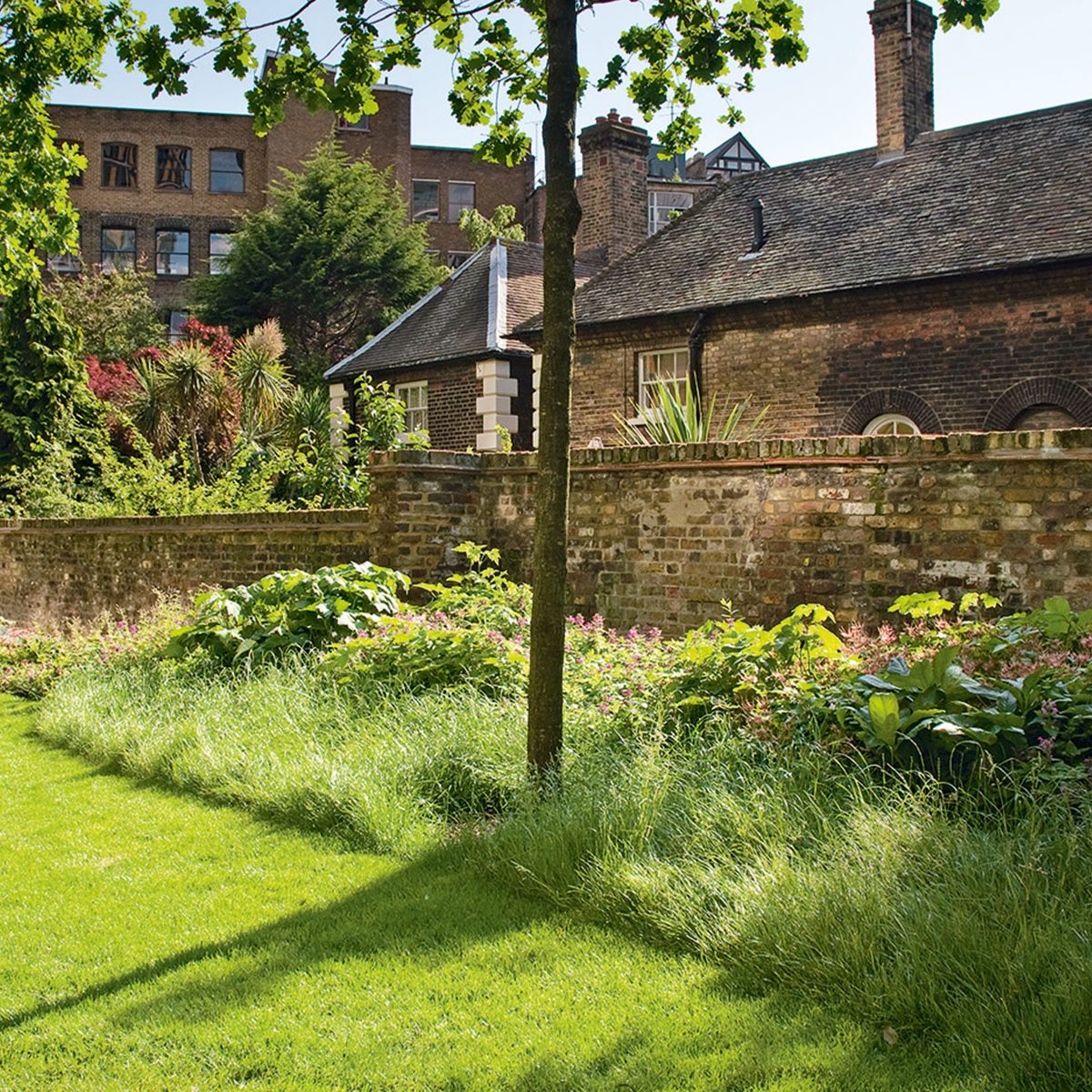 Design house: An urban woodland garden on London’s South Bank
Design house: An urban woodland garden on London’s South BankA corner of London’s South Bank, known for its iconic residential and commercial buildings, has been transformed into an inspiring woodland fantasy
By Jennifer Ebert Published
-
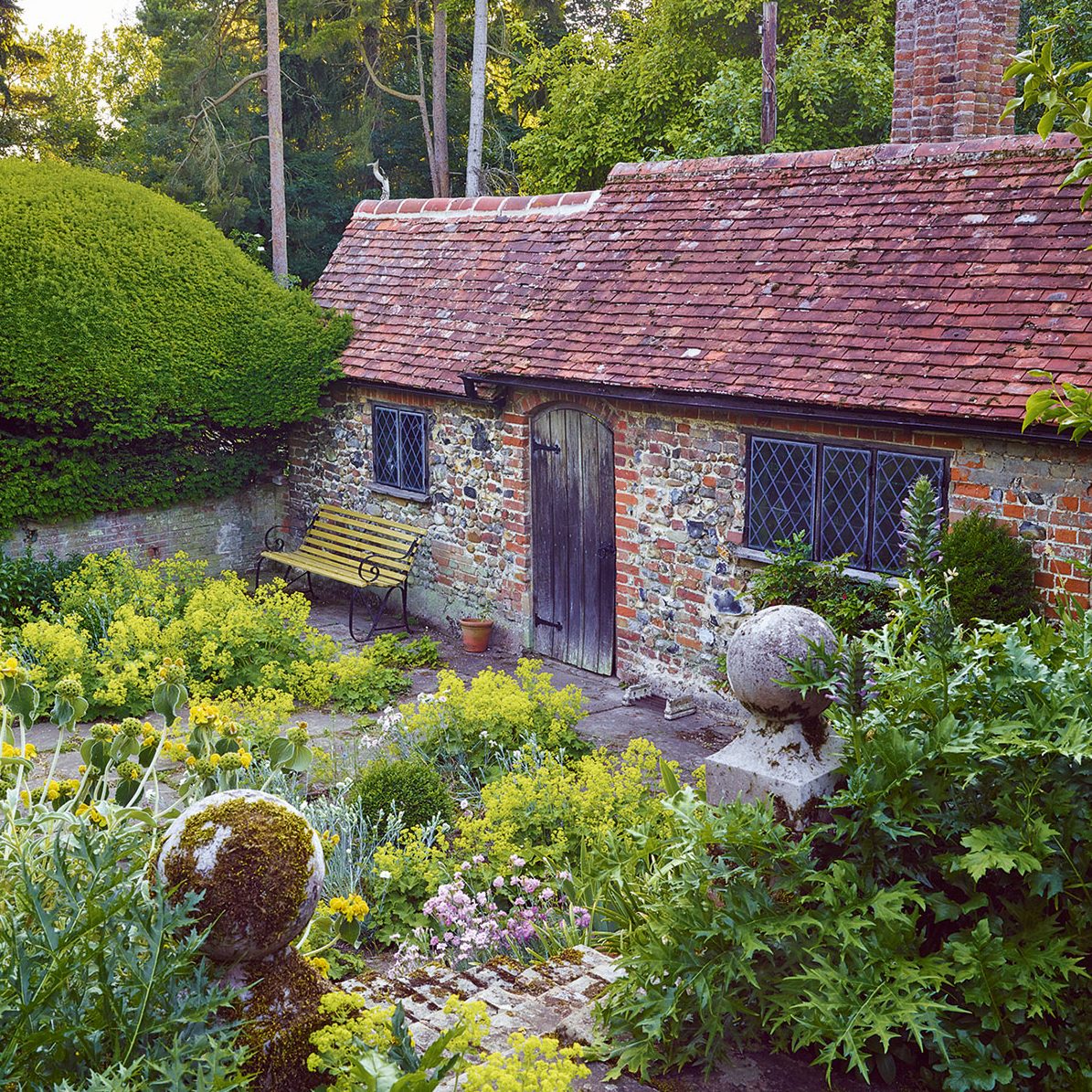 Tour the bountiful kitchen garden at Brent Eleigh Hall in Suffolk
Tour the bountiful kitchen garden at Brent Eleigh Hall in SuffolkHerbs, fruit, vegetables and honey are just some of the treasures that are once again, being grown and harvested within the Victorian walls of the kitchen garden at Brent Eleigh Hall in Suffolk.
By Jennifer Ebert Published